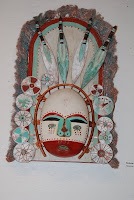
Relationships of languages can be modelled in some form of hierarchy status or in a family tree. This particular tree is divided into each of the language groups within the Alaskan native culture. it shows the relationships between which languages are alike or stand on common grounds. Some share certain features with neighboring languages while others may not share any features at all. This may cause some confusion as to arguing about which is closely related to who. For example, the tree shows the Eyak and Athabascan language sharing common features, but the Eyak language also shares them with the Tlingit language while the Athabascan doesn't. Overall, this particular language tree analyzes the relationships clearly for us ti understand.







